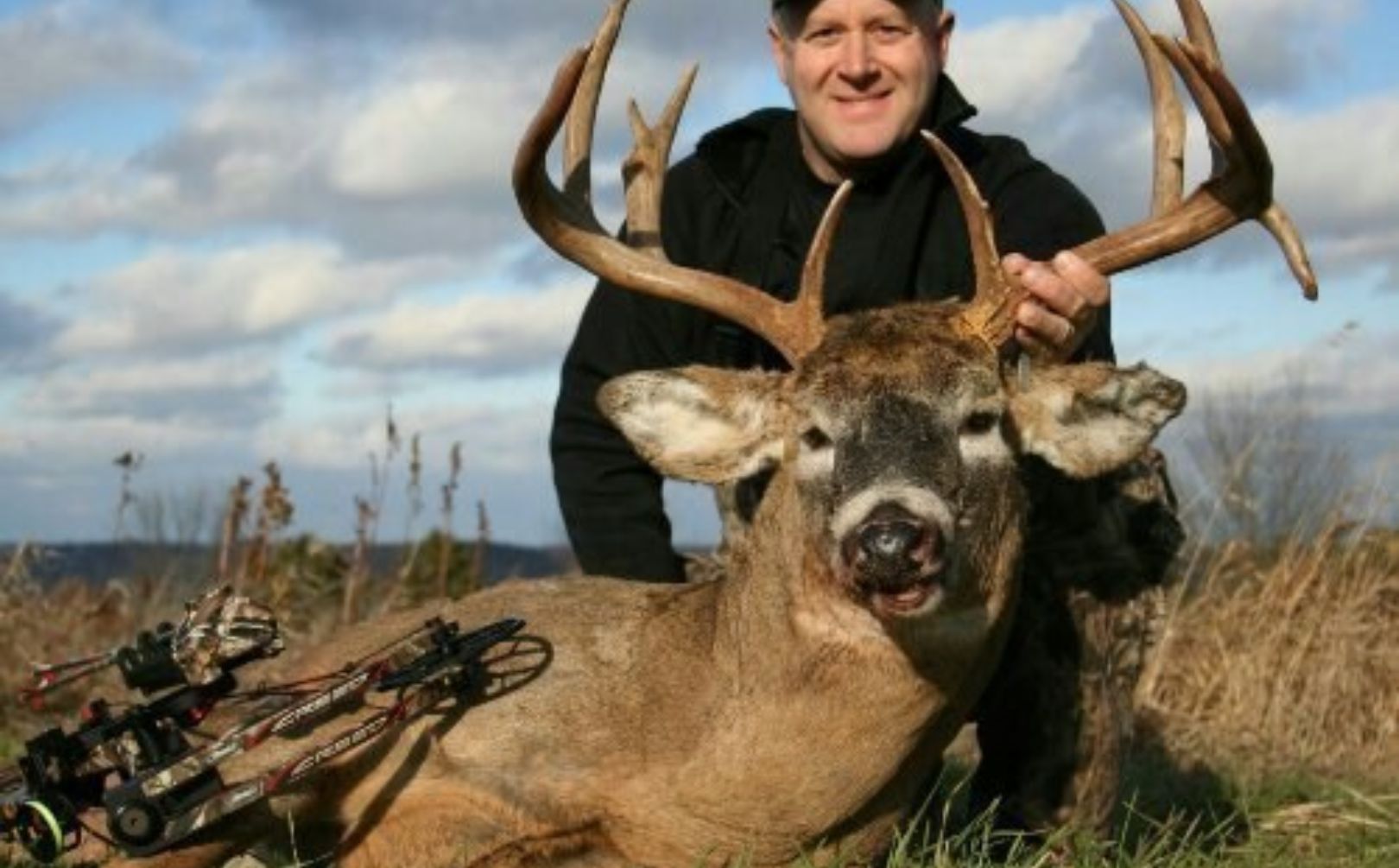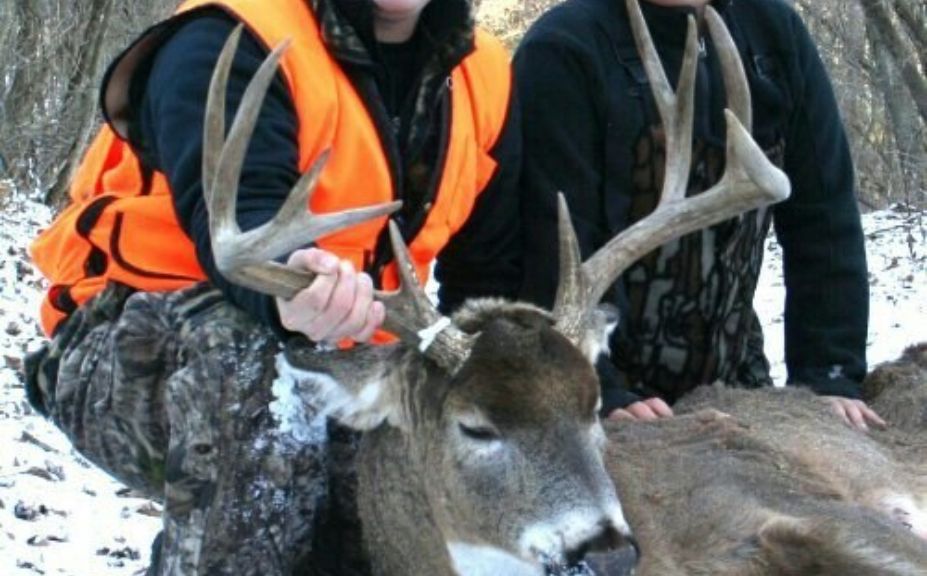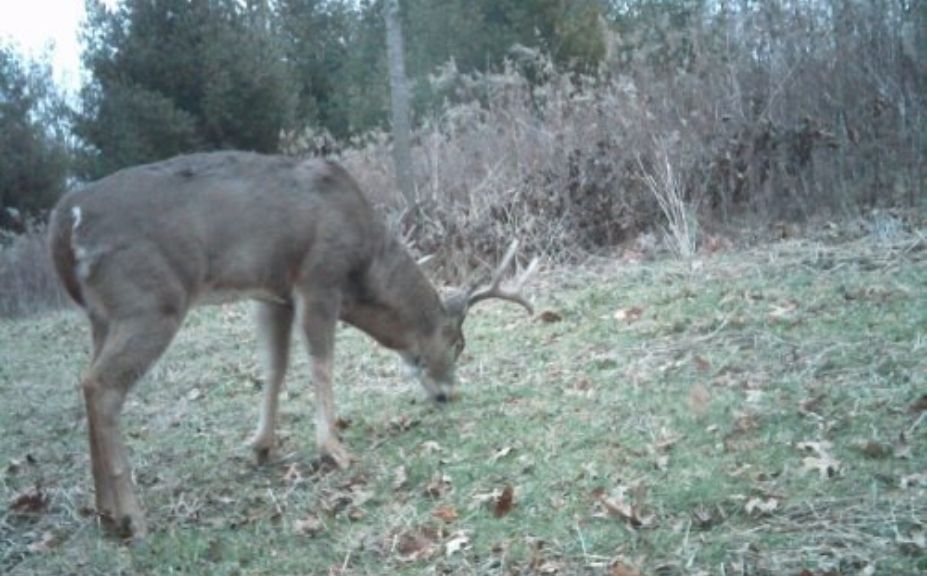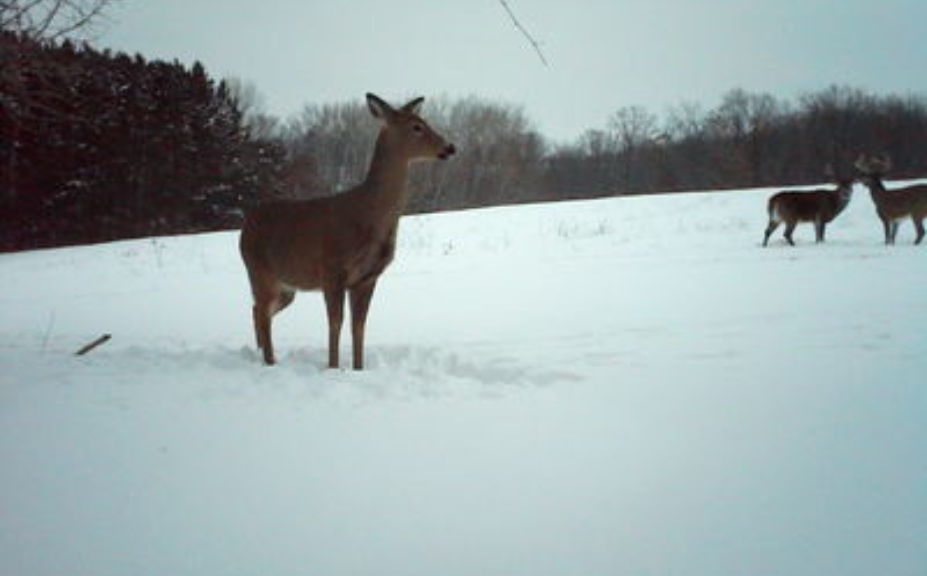
Do you get random, mid-night pictures of a local giant or two? It may appear at times that a mature buck is nocturnal, when really he has just established his daytime core area somewhere else and it takes him a lot of time to get to your trail cam. During the night a seasoned monarch wanders within his home-range, a range which may encompass multiple square miles. Does it make sense that he would visit every portion of that "vast domain"? No, instead he will offer infrequent and random glimpses that will forecast his presence at a later date. If you are getting consistent daily pictures of a mature buck close to shooting hours count yourself lucky, because you have a mature buck that calls the area you hunt, home! However, if the pictures of your target buck are random and you want to shoot him, it pays to listen to the strategies of "When, Where and Why" his personal mature buck forecast is offering to you.
Over the past 15 years of collecting pictures I have experienced dozens of game cam pics that created an opportunity for future harvests, and the season of 2013 was no different. Both my WI Archery buck above, and my WI Rifle buck below revealed to me incredibly accurate mature buck forecasts with just a handful of pictures, combined.

When
When do you typically collect random pictures of wandering giants? I have found that there are a few times that seem to be repeated often for forecast pictures:
1. Late Sept/Early October: During the annual shift of buck movement from Summer habitat, to Fall habitat
________________________________________
"The Shift" is taking place soon in a whitetail woods near you! To read more, visit:
The Shift is Starting
The Whitetail Shift of Summer to Fall Habitat
Is the Land You Hunt a Cold or Warm Season Paradise?
________________________________________
2. Early to Late Nov: During the Peak-rut to Post-rut for your area (does are bred during the same range of dates each and every year so it pays to either perform or seek research for your particular region).
3. Dec/Jan: When the entire deer herd experiences the annual movement to preferred cool-season food and cover habitat
When I owned, managed and hunted my land in the remote wilderness region of Michigan's Upper Peninsula there were several late season movers who caught my eye as a young buck when they first visited land in December when on their annual migration. The majority of these bucks came back even earlier the following year, to offer increased hunting opportunities to harvest them. Regardless of when those bucks visit your land for the first time, those same patterns often repeat themselves the following year.
My 2013 archery buck was a great example of this! He offered zero pictures in 2013, but in 2012 his handful of pictures during the Peak-rut let me know where he would most likely travel to again, when he eventually left his core area in an attempt to breed another doe for the season. All Summer long I watched the buck, as he fed lazily on adjacent lands. Those clues not only let me know where he would most likely show himself during the season, but at the same time where he would most likely travel to, to get there. Understanding that he would most likely only appear during the peak of the rut, I allowed the stand to stay clean from hunting pressure and waited until the right time to go in for the kill. The first cold-front during the Peak-rut I took a seat, and arrowed him as he exited a bedding area between his core area, and a funnel that would serve to move him towards his previous year's forecasted movements. Sure, it's not always that easy, but more often than not it has been if I waited until the appropriate time to attempt a hunt on a particular buck.
Where
Are there places on the land that you hunt that always seem to collect mature buck pictures? I see the same locations offering consistent year pictures of bucks from distant lands, nearly every year. The locations also have a few things in common:
1. Remote funnels adjacent to heavy cover
2. Lightly hunted
3. Food related
In a nutshell, "Secure, Safe and Social". A perennial waterhole can offer the same forecasts for buck movement as well as a food source, as bucks will focus on locations that not only have the potential to contain other deer, but that the local deer herd recognizes as "safe". Although the location of the game camera may seem like an incredibly tempting spot to hang a stand (and it may be), don't ingnore the entire movement that a single picture can reveal within a portion of your land, and not just a particular spot.

In 2012 we started getting pictures of a mature buck with a split G2 on his left side, and crab-claw on his right side. The handful of pictures were so few that he at first glance appeared to from a Big 9 point that we were very familiar with. However after the season we realized that he was a different buck! A friend in the area saw the buck feeding during late winter on an adjacent hillside and the hopes of 2013 were immediately born. The only problem? His core area was not located on the land that we hunted, so "When" and "Where" we hunted him would become extremely critical to our success. With 2 more sets of pictures offered by him in 2013, my son (Jake) and I were all set for an opening day of rifle season hunt! We were really in hoping the pressure of our neighbors would encourage him to relocated to the heavy security cover that was adjacent to the small hunting plot his only daytime photo was taken from.
As we sat on the edge of security cover over 300 yards away from the locations of two different sets of pictures of our target buck, we were extremely hopeful! And sure enough-he followed the script with Jake by my side. This was the first time we had seen this buck in person and we were able to watch him for longer than we probably should have while trying to get Jake into position for a shot. After a final frantic few seconds and a near miss at the opportunity, I was eventually able to shoot him as momentarily paused during a hasty retreat. His pictures offered merely a handful of forecasts over a 2 year period, but they were enough to offer a highly defined mature buck forecast of his movements!
Why
There are many reasons for infrequent pictures of a mature buck, but typically it boils down to one thing: His core area is somewhere else! If he needs to travel a 1/2 mile to a mile or more to reach the location of your game camera he has a lot of potential distractions of both habitat and social influences. Therefore, his movements appear nocturnal and mysterious, when really they paint a sometimes very accurate forecast of where he will be again in future weeks or seasons. If you let the conclusion take over that he just lives somewhere else the majority of the year, the randomness of his movements make a whole lot more sense! He will move due to the urges of the rut, hunting pressure and food...you just need to match the "Why" with the "When and Where".
During the Pre-rut a mature buck can typically find a doe to breed fairly quickly in his own core area, as soon as she becomes receptive. However after a week or more and 1-2 does already bred, the pickings start to become pretty slim! When receptive does become scarce, a mature wanders, and he can wander a long distance within his typically expected home range of 2-3 miles.
________________________________________
To learn more about hunting strategies during all 3 phases of the rut, check out these articles:
Pre-rut Phase
Peak-rut Phase
Post-rut Phase
________________________________________
Whether you get just 1 picture during the late summer, or a glimpse during the rut the previous year...the Peak and Post-rut phases are an outstanding time to take advantage of his natural movements. Unlike the gun season where a mature buck is often simply just looking for a safe hidey-hole to weather the storm of orange, the middle of the rut is a great time to take advantage of a frequently infrequent guest on the lands that you hunt.
As truck doors slam and ATVs announce an invasion with a slight turn of the key, gun season is another outstanding time to place your tag on a local monarch. One of my favorite tactics is to maintaini a large % of secure habitat between myself and the expected neighboring pressure, particular "secure habitat" that a wandering mature buck has forecasted his movements from!
With gun-seasons waining to their quiet, season-ending closures, bitter temperatures taking hold and snow in the forecast, the deer herd turns it's attention to survival! The lazy days of Summer are forgotten, the rut will only offer a fleeting % of remaining days and it's time for mature bucks to seek both food, and cover. As a savvy private land manager you may have prepared for this period of time with outstanding cool-season habitat improvements, but whether you have prepared or not, the local deer herd is on the move! Some of my favorite mature buck opportunities have occured at this time of year, on bucks that have forecasted their movements during previous seasons. Have you ever captured a great late season game pic of a local monster? I have, and the only bad thing is that you have to wait an awful long time for the potential opportunity to happen again!

Conclusion
Ideally, I love to hunt core, mature bucks that offer potential harvest opportunities the entire hunting season. However, it's nearly impossible to either create or own the only parcel in the entire area that holds every local giant. It's because of this impossibility, that a balanced portion of my hunting strategy is to recognize the game cam mature buck forecasts that are revealed to me each and every season. Maybe it takes scouring through your previous year's game cam pictures, or you are already hoping for an opportunity at a random monarch this season, but it pays to come to a conclusion of "When, Where and Why" you will have the best chance at a potentially highly defined shot at success this Fall!